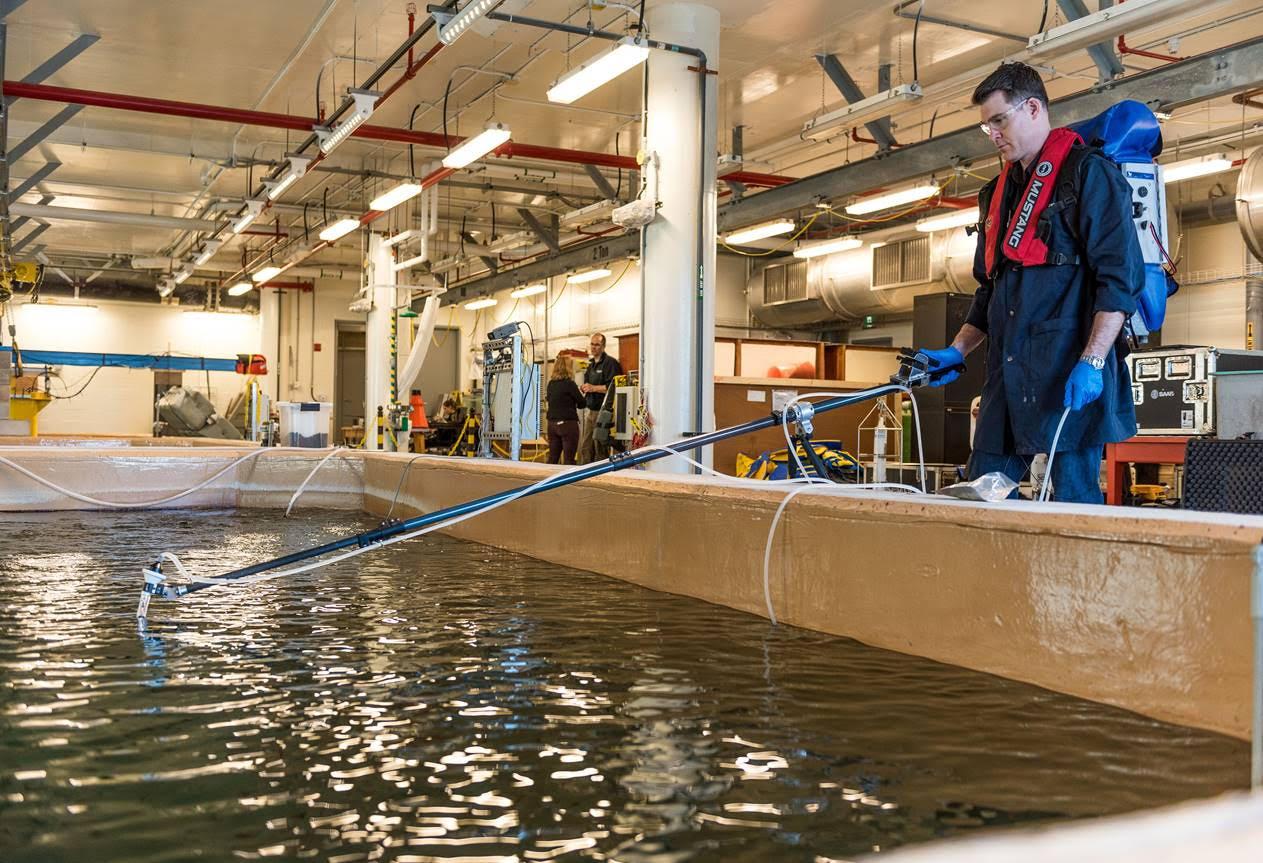Dr. Marc Skinner, Stantec Consulting Ltd
Conducting environmental effects monitoring (EEM) investigations of tidal in-stream energy conversion (TISEC) devices in marine ecosystems is challenging in a naturally variable environments, particularly macrotidal systems like the inner Bay of Fundy (iBoF). Our project applied a novel technology for in-situ rapid species identification in high flow marine conditions using environmental deoxyribonucleic acid (eDNA) tools to build upon scientific evidence gained from national and international tidal turbine EEM programs. As eDNA is sampled from non-living ecosystem components, this new technology provides an entirely non-invasive means of conducting ecological surveys without physically harming organisms, particularly species-at-risk, and at a considerably lower sampling effort and cost. Multiple related experiments in replicate tower tanks with varying densities of striped bass (Morone saxatilis) were established at Dalhousie University’s Aquatron over a six-week period to: (a) assess eDNA detection efficiency and signal persistence; and (b) quantify striped bass density based on the eDNA prevalence. This presentation will discuss preliminary study results and methods to overcome gaps in data collection and interpretation using traditional monitoring tools to assess marine fish populations.

